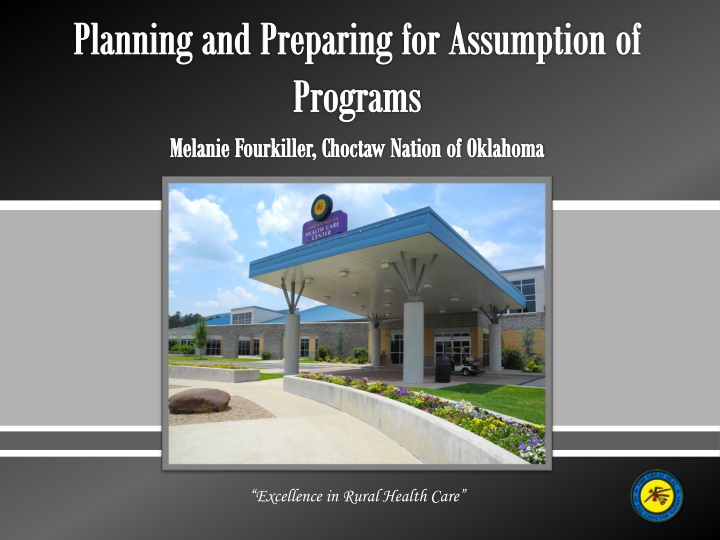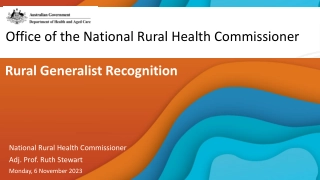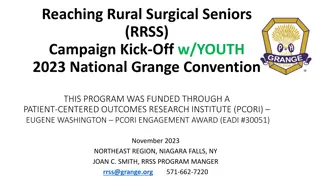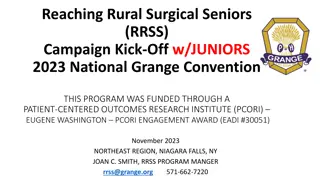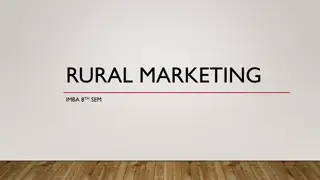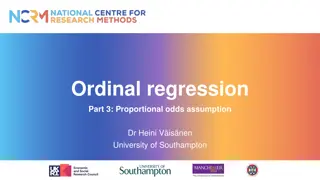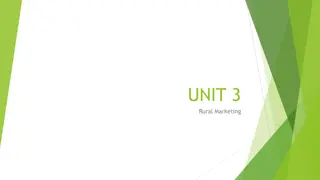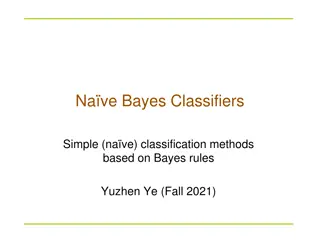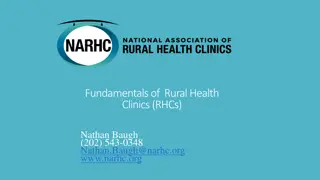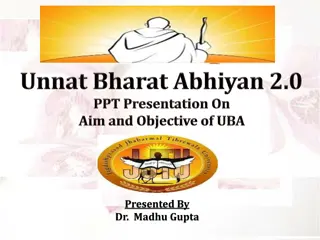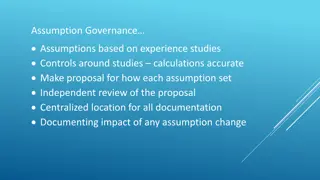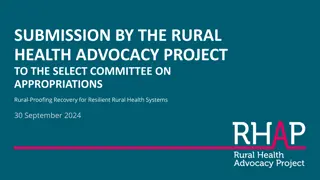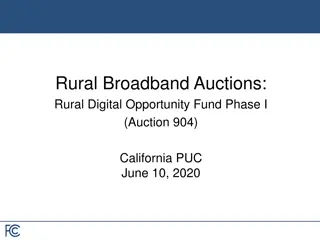Planning and Preparing for Assumption of Programs in Rural Health Care
Detailed information is needed on all PSFAs considered for assumption by the Tribe. Researching PSFAs involves obtaining information from various sources, reviewing financial data, and engaging with SG Tribal networks. Analysis and decision-making must involve community and tribal leader direction to prioritize actions that make health services more responsive to Tribal community needs.
Download Presentation

Please find below an Image/Link to download the presentation.
The content on the website is provided AS IS for your information and personal use only. It may not be sold, licensed, or shared on other websites without obtaining consent from the author.If you encounter any issues during the download, it is possible that the publisher has removed the file from their server.
You are allowed to download the files provided on this website for personal or commercial use, subject to the condition that they are used lawfully. All files are the property of their respective owners.
The content on the website is provided AS IS for your information and personal use only. It may not be sold, licensed, or shared on other websites without obtaining consent from the author.
E N D
Presentation Transcript
Planning and Preparing for Assumption of Programs Melanie Fourkiller, Choctaw Nation of Oklahoma Excellence in Rural Health Care
What are PSFAs? Programs, Services, Functions and Activities; Programs (high level), Activities (detailed level); Describe all contractible operations of the IHS, both administrative and programmatic, at each organizational level;
Researching PSFAs Detailed information is needed on all PSFAs considered for assumption by the Tribe; For new SG Tribes, it is advised that information be obtained on all PSFAs; Research will allow the Tribe to make informed decisions about PSFAs to assume, conduct internal management planning, as well as to provide awareness of remaining responsibilities of the IHS.
Researching PSFAs PSFA Information Sources: o Agency Lead Negotiator (ALN); o Office of Tribal Self-Governance; o HQ, Area and Service Unit staff; o Self-Governance Education/Communication; o Other Self-Governance Tribes.
Researching PSFAs Steps: o Request/Obtain financial and PSFA information from the ALN, including all PSFA manuals applicable to your Tribe; o Review in conjunction with the financial information provided; o Request meetings with HQ, Area or SU staff as needed to answer questions and provide in-depth information about IHS operations; o Utilize SG Tribal networks.
Analysis and Decision Making Community and Tribal Leader direction this should guide overall PSFA analysis and priority-setting. This will ensure that the resulting course of action will contain strategies to make health services more responsive to the articulated needs and desires of the Tribal community and its Leaders. The Congress hereby recognizes the obligation of the United States to respond to the strong expression of the Indian people for self-determination by assuring maximum Indian participation in the direction of educational as well as other Federal services to Indian communities as to render such services more responsive to the needs and desires of those communities. (25 U.S.C. 450a(a))
Analysis and Decision Making Determining feasibility of assuming specific PSFAs, or portions thereof: o Population to be served; o Financial considerations; o Opportunities and challenges; o Internal management preparedness; o Improvement of healthcare outcomes; o Phase-in strategies. Consideration of opportunities and challenges: o Review and consider strategies to capitalize on opportunities that may be available to the Tribe to leverage its health care services, such as third party billing; partnerships with IHS and other organizations and providers; Inter-Tribal partnerships; Affordable Care Act opportunities; and innovative health care delivery system models. o Identify barriers and challenges and develop strategies to address such barriers.
Analysis and Decision Making Orderly transition to Tribal administration of health care programs: o Identify management systems and infrastructure needed; Appropriations and budget; Tribal legal infrastructure; HR, Finance and other management systems; Health service delivery infrastructure; o Identify transition strategies; Exp: Purchased and referred care; personnel, vendor contracts, etc. o Identify health care program implementation strategies.
Assessment of Management Infrastructure Governance/Organizational Structure Health Department or System Internal Management Support o Finance o Human Resources o IT o Procurement/Contracts o Facilities
Governance/Structure Governance and Decision-Making Structure o Health Governance Models o Organizational Structure o Decision Making hierarchy Budget Programmatic design/partnerships Policy Considerations o Responsiveness to Community o Flexibility o Unique healthcare operations
Health Infrastructure Extent of current Health programs operated o Community based, outpatient, inpatient, etc. Health Professional Leadership o Medical Direction o Health Administration Health Systems of Support o Accreditation o Recruitment/retention o Billing/collection o Credentialing o Quality Improvement/Compliance Health Policy o What policies already exist, and what policies are needed o Integration
Health Infrastructure Health Policy o What policies already exist, and what policies are needed o Integration Provider Network Development
Management Infrastructure Finance/Contracting o Budget/Appropriations process; o Reallocation of budgets; o Billing/collections; o Expenditure authorities and approvals; o Integration of Tribal policy; Preferences Competition Contract provisions o Responsiveness/flexibility; o Indirect Cost Pool Planning; o Financial Reporting.
Management Infrastructure Human Resources o Transition of Federal staff o Recruitment & retention of health professionals o Policy changes/development 24 hour operations Management of health professionals Health Professional salary scale Continuing Education Licensure Etc. o Organizational development
Examples of Approaches o o o o
Examples of Approaches o o o o o o
Examples of Approaches o o o o o
Examples of Approaches o o o o
Questions? Yakoke! Melanie Fourkiller mfourkiller@choctawnation.com Excellence in Rural Health Care
